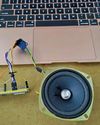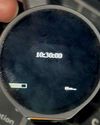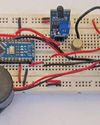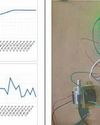
The open source effort to establish a 5G testbed is part of a project that was founded by the Department of Telecommunications of the government of India. It has been running for about four years now. There were nine principal investigators on this project.
The project itself officially ended on 1st January 2022. Now, at the Indian Institute of Science in Bengaluru we are on to the maintenance of the project where we maintain the testbed and encourage its usage and do minor developments.
The following is the overview of different aspects of what this project is all about. There are fundamentally four parts to it. Let us dive in and understand about these attributes.
1. System development in sub 6GHz (FR1)
The 6-gigahertz (GHz) development platform is the portion that is actually open source. We have primarily looked at physical layer enhancements and implemented the split six architecture, also called algorithms, and integration with different radio units. We have developed antenna arrays 16 by 4 that are 6499 arrays with an up-down converter and transceiver for the sake of completeness, while testing it alongside extensively in an antiquated chamber.
2. Vehicle-to-X (V2X) platform
It is a Long Term Evolution (LTE) based platform. It is a fully functional platform, which can perform end-to-end latency measurements. We have enhanced the MAC schedulers in LTE and reduced the latency of a native implementation of LTE by a factor between 5 and 10. Also, the remote driving capabilities have been demonstrated on campus.
3. Visible light communications (VLC) system development
This is a complementary technology to 5G and not a mainstream one. We have built a communication system which is able to deliver about 4.8 gigabytes per second using OFDM. It also incorporates beam steering and has technical knowledge to create its backbone.
Diese Geschichte stammt aus der December 2022-Ausgabe von Electronics For You.
Starten Sie Ihre 7-tägige kostenlose Testversion von Magzter GOLD, um auf Tausende kuratierte Premium-Storys sowie über 8.000 Zeitschriften und Zeitungen zuzugreifen.
Bereits Abonnent ? Anmelden
Diese Geschichte stammt aus der December 2022-Ausgabe von Electronics For You.
Starten Sie Ihre 7-tägige kostenlose Testversion von Magzter GOLD, um auf Tausende kuratierte Premium-Storys sowie über 8.000 Zeitschriften und Zeitungen zuzugreifen.
Bereits Abonnent? Anmelden

STK435 IC-Based STEREO AMPLIFIER
This stereo AF amplifier uses the STK435 IC, a highly popular choice due to its simplicity.

A SEWER DRAIN SHIELD For Smart Cities
Drainage systems are vital for storm water management but often transport pollutants, especially plastics, to rivers and oceans, harming ecosystems.

ESP32 SPEECH FUNCTION: Text To Speech
Speech capability in technology primarily has two dimensions: text to speech (TTS) and speech to text (STT). This device focuses on TTS.

World's Smallest Programable INDUSPHONE DESIGN
This is the second part of designing the world’s smallest phone, where the UI is integrated with the basic functions of the phone.

FLAME-SENSING FIRE ALARM Using An Arduino Nano
Fire safety alarms are crucial in both residential and industrial environments.

loT-Based Distribution Transformer CONDITION MONITORING SYSTEM
The proposed IoT-based distribution transformer condition monitoring system enables real-time monitoring of distribution transformers, identifying such deviations as overload conditions and overheating.

Wi-Fi 6 AND Wi-Fi 7 Powering The Next Wave of Smart Connectivity
Wi-Fi 6 leads with faster data rates and reduced latency while upcoming Wi-Fi 7's backward compatibility will facilitate gradual upgrades from Wi-Fi 6, easing transitions. However, advanced features like multi-link operation (MLO) and ultra-low latency may command a premium, making Wi-Fi 7 suited for high-end applications.

CHARGE FORWARD: High-Voltage Batteries And MSMEs Can Fuel INDIA'S EV REVOLUTION
A nuanced explanation of low- and high-voltage EV batteries by Dr Gokhale, Vice President for Battery Technology at JSW Energy, illuminates their advancements and influence. The essential role of MSMEs and academia in developing a strong EV ecosystem emerges, marking their significance for India's push towards self-reliance in this innovative field.

"MILES TO GO Before I Sleep"
A teacher illuminates the path to success through the light of knowledge, yet some teachers extend that light to society through their contributions and research. Known as the architect of the modern M3 electronic voting machine (EVM) and the voter verifiable paper audit trail (VVPAT) that transformed India's democratic process, Prof. (Dr) Rajat Moona's journey began in the modest town of Bareilly. Here is his story, as recounted to and written by EFY's Yashasvini Razdan.

STARTUPS & INNOVATORS
1 One Charger To Charge All Your Devices | 2 Harnessing AI Technology For Efficient Pest Management | 3 Wireless Light-Based Communication With Velmenni's Technology